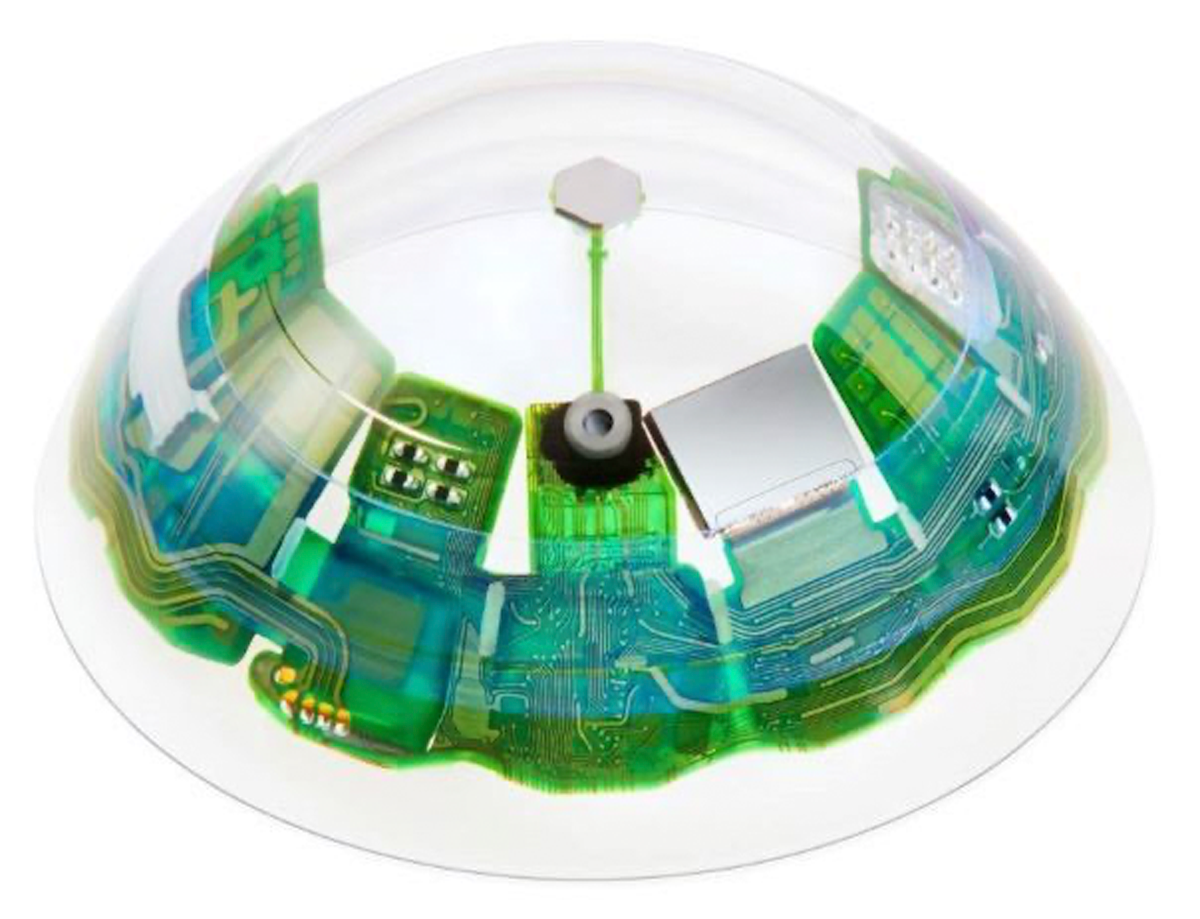The Smart Contact Lens: Your Eyeport to the Metaverse
- 8 minutes read - 1646 words
Table of Contents
Every new technology invites speculation and concern about how it will evolve and what impact it will have. The Metaverse promises to create a worry-free virtual world where you work or live. There are, of course, technical challenges. One of them is how to integrate the Metaverse into the real world. Smart lenses might be the solution.
CEO wearing smart contact lens
The Chief Executive Officer of Mojo Vision has demonstrated the viability of the company’s smart contact lens by wearing it in his eye. That does not belong in the realm of science fiction or in “The Expanse,“ “Ready Player One,“ or “Snow Crash.“
An innovative company called Mojo Vision is developing “smart contact lenses.” When you want to enter a virtual world or the Metaverse, instead of covering your face with a pair of glasses, you use a couple of smart contact lenses. They are not restricted to virtual worlds; they also allow a mixed reality experience.
There are still problems with the user experience of existing VR headsets; for example, wearing them for long periods could cause headaches or other inconvenient side effects. Using XR or VR glasses in public places is also not recommended. There is an improvement in integrating smart contact lenses with everyday use cases.
So it’s about squeezing the hardware into a tiny lens that sits on your eye and gives you access to a digital world. Wearing an electronic device in a sensitive area like the eyes raises health and safety concerns in addition to hardware engineering problems. This means that people in technology and medicine work together to ensure the lenses are safe and comfortable for their users.
Feature Development
A few months ago, it became “feature complete.” This means that the company managed to put all the necessary hardware inside the lens to make it functional (Mojo vision is focusing on micro LEDs now). Preparing the first version for shipment, components are:
A microdisplay with a 14,000 pixel-per-inch MicroLED display. It measures less than 0.5mm in diameter with a pixel pitch of 1.8 microns. So far, this is the world’s smallest and densest display.
- An image sensor for seeing the surroundings and processing them through computer vision (e.g., edge detection)
- Eye-tracking sensors (accelerometer, gyroscope, magnetometer)
- A battery system
- A 5Ghz radio communication antenna to make the lens communicate with an external unit
- ARM processor coordinating the message flow
The lens doesn’t contain the processing unit inside, but it communicates via radio waves with an external computational module.
It is impressive that they managed to put all these components inside a single contact lens; to do this, they had to manufacture many custom components. The prototype works and can show text and images and run applications.
The current prototype needs some additional work; real-life tests still have to be done, like wearing the bright lens on an eye collecting user experience, like:
How the lens feels, expected to feel like a standard contact lens
How warm the lens gets, it should not cook your eyes
How does it feel over time? Is it causing headaches
The amount of customization per user is necessary; every user has a different eye shape
Of course, there is still a lot of work to do in testing and polishing, but now that they reached this critical milestone, the device can be considered feature complete. From this moment on, it’s all about setting up a test framework to finalize the hardware until delivery. Adding content apps and content also needs some work; the current tests include:
Reading a text
Showing an image
Using a compass app for orientation
However, Mojo Vision has pivoted to Micro-LED Displays

Feature Details
Most miniature, Densest Display Our MicroLED display has 14,000 pixels per inch. So far, this is the smallest and densest display of dynamic content worldwide. It is less than 0.5 mm in diameter, and the distance between each pixel is 1.8 microns.
With a Mojo-designed micro-optic and a custom silicon backplane chip, the Mojo display can project bright text, rich graphics, and high-resolution video on the wearer’s retina. This can be seen indoors, outdoors, or even if you close your eyes.
A custom ASIC with a 5GHz radio and an ARM Core M0 processor sends sensor data from the lens and streams Augmented Reality (AR) content to the MicroLED display. This gives the camera low latency. AR apps need to talk with minimal delay, which is what the radio can do. It does this using a communication protocol unique to Mojo and is faster and more efficient than Bluetooth LE.
Eye-tracking needs to be very accurate, and seeing and interacting with digital content placed in the real world is one of the essential parts of any AR experience. Mojo Lens has a custom-made accelerometer, gyroscope, and magnetometer that track eye movements so that AR images stay still when the eyes move.
With its motion-sensing algorithms, Mojo Lens’s eye-tracking is a thousand times more accurate than the best Augmented Reality/Virtual Reality optical eye-tracking systems on the market. This is a vital part of Mojo’s unique user experience, which is controlled by the eyes.
Power is managed by a system that was made just for it. It has medical micro-batteries, an integrated circuit for controlling power, and parts for wireless charging. The way the Mojo Lens gets its power is a big part of it. Before FDA clinical trials, it ensures that the final product can be worn all day and that it works and is safe.
From the user’s point of view, eye tracking needs to be quick and accurate.
Slow eye-tracking causes delays that annoy users and give them “cyber” headaches. Invisible Computing needs to be able to track your eyes quickly. Your eye gaze is the fastest and most accurate way to point and navigate a virtual world or apps within a virtual world.
FDA Certification
Finally, testing and refining will result in a submission to the FDA for market approval. Once the FDA approves the device, it can go into human eyes and finally help people with eye impairments have a better life or niches of professionals (like athletes) in better performances.
Mojo still has a long way to go to get that certification as of right now. Some studies have already started to show that the lenses are safe and effective, but it still needs to be tested in actual clinical trials.
Optometrists as distributors
No matter what the main reason is for wearing Mojo’s lenses, optometrists will be a vital part of the process as gatekeepers and distributors. They’ll have to measure the wearer’s vision and the shape of their eyes, then send that information to Mojo, which will make custom lenses.
Different people have different-shaped eyes, so your optometrist needs to change the lens to fit your eyes. So far, optometrists have not played a big part in Science Fiction or Cyberpunk stories. Who would have thought that optometrists would help make Cyberspace a reality?
Users will have to trust Mojo not only with their eyes but also with their data. People soon realize that the lens can collect information about everything their eyes rest on, including products, places, political ads, and people. Mojo will have to show them that the lenses don’t record this information and give it to advertisers or the government. Sinclair says that the only thing the lenses will remember is human faces, and even that information will only be kept for a short time.
Use Cases
Mojo doesn’t plan to make lenses for regular consumers until it has started selling its lenses for people who need help seeing and lenses for businesses. Like the other versions, the consumer version of the lenses will put helpful digital information in front of the wearer’s eyes to help them get things done.
But there will be more information about life than about work. For example, if you are leaving the airport with a lot of luggage in your hands, the lenses could show you the way to your car in the parking lot.
As your Uber ride comes, they might put a pointer on it and show the license plate number and other information. If someone rings your doorbell at home, the lenses might show a video of the person standing on the porch.
The technology appears promising, but it will take some time until we can use it for metaverse experiments.
Data Privacy
Even more troublesome may be that not just the person who wears the tech needs to be convinced of its privacy . People who come into contact with the wearer may worry that they are being recorded. This was a problem with Google Glass, which other people could see you were wearing, and it could be even worse with technology that can’t be seen, like contact lenses.
In the Science Fiction series „The Expanse, “ the Rocinante team is betrayed by a spy wearing a bright contact lens. The spy can access all information in real-time and even communicate with it. It is a Science Fiction scenario, of course, but it is an example of how data privacy can be challenged by technology integrated into your body.
The public’s view of what it means to have a reasonable expectation of privacy in the digital age is changing. Still, Mojo will have to do a lot of reassuring teaching when its product finally hits the market.


